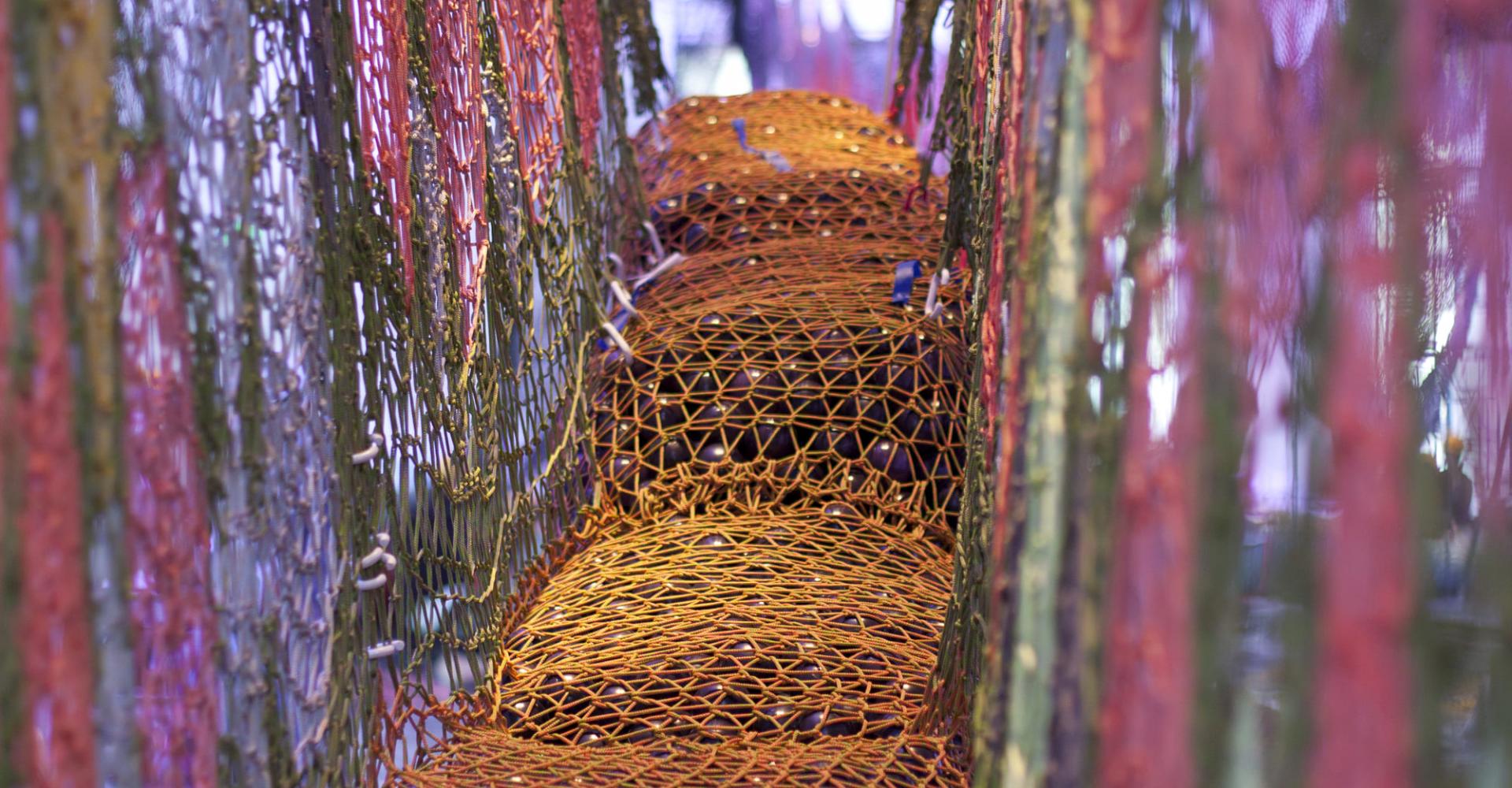Curated By: Jessica Morgan
An artist with an inimitable style, for the last twenty years Ernesto Neto has been bringing his viewers sensory and bodily experiences. Through works that can be touched, inhaled, bathed in, played with and which enfold the visitor in biomorphic forms built of translucent fabrics, Neto defends an experiential art that combines physical experience with an intellectually rigorous examination of our environment.
Neto’s sculptural environments both respond to and are inspired by sources as diverse as the uniform architecture and design of the rationalized world, organic culture and beach trade of his native Rio de Janeiro, or more specifically Ipanema. Ernesto is a shrewd observer of the attempts by capital to organize and systematize our environments, and in many ways, his work is a response to these limitations, one that tries to bring his viewers a fresh way of dealing with the world, a way less obsessed with efficiency. He lets us take time, lean back, breath it all in, lose ourselves, make a noise and experience an environment beyond the usual cuboid that normally contains and constrains our bodies.
Neto’s proposal contains a radical approach to living, as well as the tools to examine our everyday surroundings. Reflection on his work leads to the realisation that daily life is largely devoid of sensorial pleasure, that the speed of twenty-first century living is such that moments of undirected thought (minus the rapid-fire imagery of television and other media) are almost unheard-of, and that the aspect of play in adult life (and increasingly that of children too) has been reduced to electronic communication with little or no real social contact or physical interaction. Neto’s work is not suggestive of an illusory attachment to some invented past utopia, but is rather concerned with the contemporary negotiation of space, place, social relations and the role of the local in the global. His work is deeply informed by his upbringing in Brazil and the complex history of the country: its colonial past, US political interference, and the contemporary boom; while the thinking behind his work is concerned with the subjective understanding of what it means to be on the periphery and the conflict between western and non-western status.
At Faena Art Center, Neto pays attention to the specificity of the place, infusing the exhibition with his own impressions of Buenos Aires and incorporating references to the socio-political life of today’s city. The space of the Faena Arts Center is characterized by its industrial scale, and Neto’s earlier work makes special use of height to elevate the spectator on the one hand—by offering them fresh perspectives on his work and occupying a different aerial space—and, on the other, to hang his characteristic nets and tubes that supports his sculptural work and breathes life into the architectural space. Faena Art Center’s inaugural project, Ernesto Neto’s first major exhibition in Argentina, promises to bring together his key interests within the striking space of an old mill, enlivening the space with sound, color, and spatial and sensory experiences, as well as the artist’s exquisitely beautiful forms.–JESSICA MORGAN
About Ernesto Neto
Ernesto Neto (b. 1964, Brazil) has produced an influential body of work that explores constructions of social space and the natural world by inviting physical interaction and sensory experience. Drawing from biomorphism and minimalist sculpture, along with Neo-concretism and other Brazilian vanguard movements of the 1960s and ’70s, Neto incorporates organic shapes and materials that engage all five senses, producing a new type of sensory perception that renegotiates boundaries between artwork and viewer; the organic and the manmade; and the natural, spiritual, and social worlds. His works are held in the permanent collections of the Museum of Modern Art and the Solomon R. Guggenheim Museum in New York, Tate Gallery in London, the Carnegie Museum of Art in Pittsburgh, Museum Boijmans van Beuningen in Rotterdam, the Centre Pompidou in Paris, the Hara Museum in Tokyo, the Contemporary Art Center of Inhotim in Brazil, the Hirshhorn Museum and Sculpture Garden in Washington, D.C., the Milwaukee Art Museum, and the Museum of Contemporary Art, Los Angeles, among many others.
About Jessica Morgan
Jessica Morgan is Director of Dia Art Foundation in New York. Morgan has served as Daskalopoulos Curator, International Art, at Tate Modern (2010-2015) and as a curator at Tate since 2002. At Tate, Morgan curated a number of important exhibitions including the retrospectives Saloua Raouda Choucair (2013), Gabriel Orozco (2011), John Baldessari: Pure Beauty (2009), and Martin Kippenberger (2006), as well as the group shows The World Goes Pop (2015), The World as a Stage (2007), Time Zones (2004) and Common Wealth (2003). Morgan also curated the Unilever Series commissions for the Turbine Hall by Tino Sehgal, These associations (2012); Dominique Gonzalez-Foerster, TH.2058 (2008-09); and Carsten Höller, Test Site (2006-07). Additionally, she developed a series of solo exhibitions of international emerging artists including Meschac Gaba, Roman Ondàk, Catherine Sullivan, Simryn Gill, and Brian Jungen in 2005-06.
Faena Art Center Buenos Aires
Aimé Painé 1169, Faena Buenos Aires, Argentina
